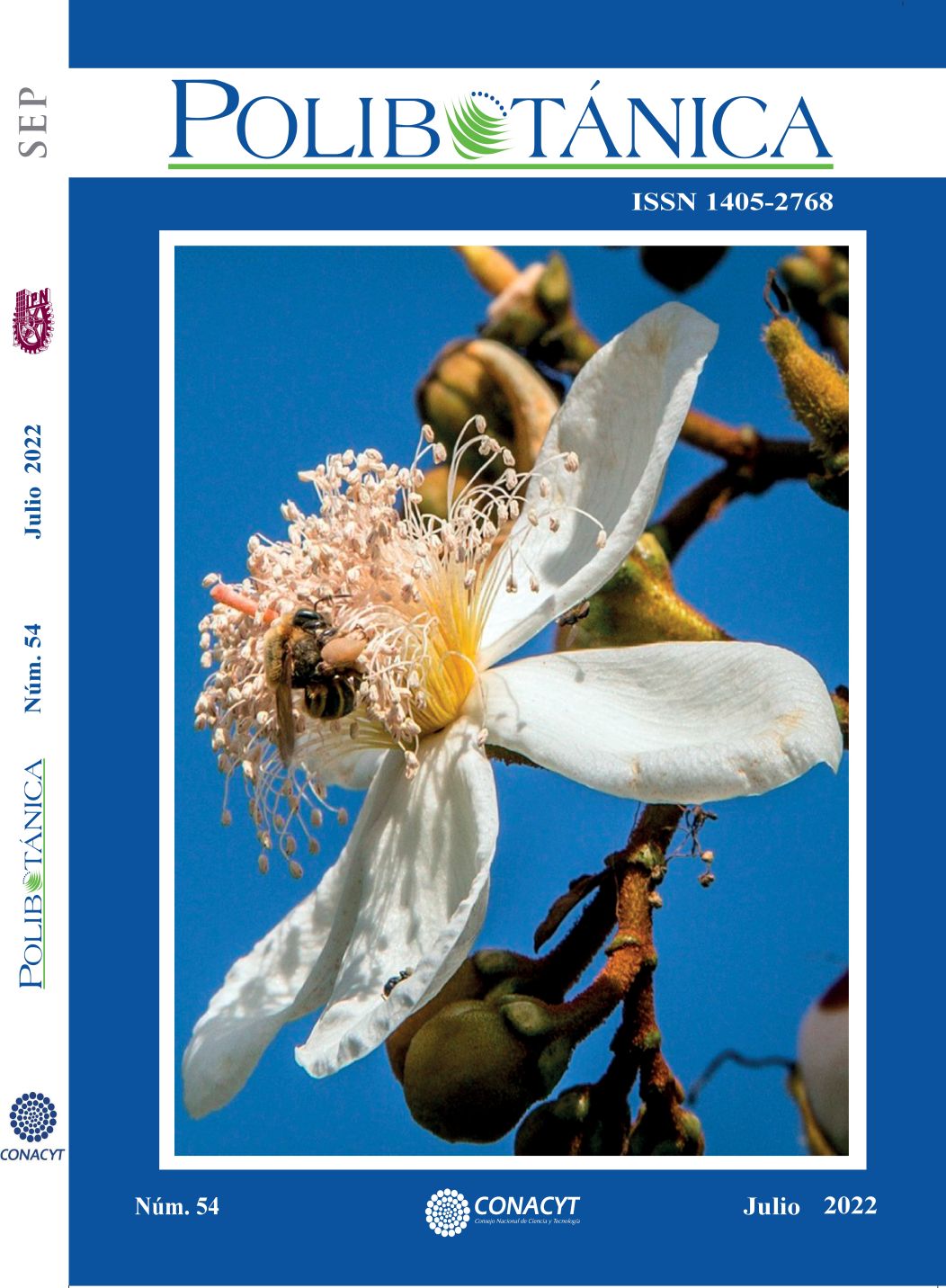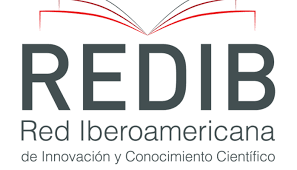The native trees of Sinaloa and their conservation in the family garden agroforestry system
DOI:
https://doi.org/10.18387/polibotanica.54.14Keywords:
Etnoagroforestal; Badiraguato; Cahitas; Selva Baja CaducifoliaAbstract
Studies on floristic diversity in Sinaloa reflect about 3736 species of vascular plants, of these little is known about native trees, their state of conservation and use, in addition to the above, a high rate of deforestation has been registered in the state. Recognizing biodiversity, its ecological and cultural importance is of vital importance to propose sustainable use policies and reverse the environmental damage that its loss entails, therefore the objective of this work was to document the native tree species and their use in the systems agroforestry described in the literature and in a community, for this this study was based on bibliographic and field research, with the first a list of native tree species was made and in the field knowledge about trees in a community was documented . Three sampling sites were selected using the convenience method in the municipal seat of Badiraguato Sinaloa, 60 interviews were applied and 51 family gardens were visited, the results of which were analyzed through cluster analysis.577 native trees were registered, four endemic to Sinaloa, the most diverse family and genera were the Fabaceae, Quercus, Pinus and Burseras, 260 species showed to have some form of use in the literature, in the study area only the cornfields were registered and family gardens as agroforestry systems, 79 tree species were recognized, 57 present in family gardens, with eleven forms of use, among which the medicinal, shade and food source stand out. According to the cluster analysis, the orchards differ between those with introduced fruit trees and those with a higher frequency of native species which are located on the periphery and at the exit of the community. Home gardens are systems that allow the conservation of some species adapted to local conditions, both the species, the forms of management and their ecological implications must be studied in greater depth.
References
Höft, M., Barik, S., & Lykke, A. (1999). Quantitative Ethnobotany, Applications of multivariate and statistical analyses in ethnobotany. UNESCO. Obtenido de https://citeseerx.ist.psu.edu/viewdoc/download?doi=10.1.1.476.607&rep=rep1&type=pdf
Ortega Santos, A., & Cariño Olvera, M. (2014). Oasis de Baja California Sur México (siglos XVIII-XX) Propiedad y Uso Comunitario en Ecosistemas Aridos. Amnis [En ligne]. doi:https://doi.org/10.4000/amnis.2151
Vallejo , M., Ramírez, M., Casas , A., Reyes, A., & López-Sánchez, J. (2018). Cambios en la distribución de sistemas agroforestales. Ecosistemas, 27(3), 96-105.
Altieri, M., & Toledo, V. M. (2011). The agroecological revolution of Latin America: rescuing nature, securing food sovereignity and empowering peasants of. Journal of peasant studies, 163-202. Obtenido de http://biblioteca.clacso.edu.ar/Colombia/ilsa/20130711054327/5.pdf
Beals, R. (2016). Etnografía del Noroeste de México. México: XXI.
Ekholm, G. (2008). Excavaciones en Guasave, Sinaloa. México: Siglo XXI.
Garcia Marin, C. (1984). Variación morfológica, manejo agrícola y grados de domesticación de Opuntia spp en el Bajio Guanajuatense. Tesis de Maestria en Ciencias. Colegio de Posgraduados, 204.
Gentry, H. (1946). Notes on the vegetation of Sierra Surotato in Northern Sinaloa. Bulletin of the Torrey Botanical Club, 451-462.
Hoogesteger van Dijk, V., Casas, A., & Moreno-Calles, A. I. (2017). Semiarid ethnoagroforestry management: Tajos in the Sierra Gorda, Guanajuato, Mexico. J Ethnobiology Ethnomedicine, 13(34), 2-11. doi:https://doi.org/10.1186/s13002-017-0162-y
Kelly, I. (2008). Excavaciones en Culiacán Sinaloa. México: Siglo XXI. Obtenido de https://books.google.es/books?hl=es&lr=&id=i3kq9dcLeCYC&oi=fnd&pg=PA2&dq=excavaciones+sinaloa&ots=52gaiMS6EZ&sig=wtR4e8Q2GosRa_oFbz7x88LlIWk#v=onepage&q=excavaciones%20sinaloa&f=false
Lara-Ponce, E., Valdés-Vega, J., Medina-Torres, S., & Martínez-Ruíz, R. (2017). Situación de la agricultura de mayos y mestizos del Norte de Sinaloa, México. AGRICULTURA, SOCIEDAD Y DESARROLLO, 14, 577-597.
López Aceves, H. E. (2007). Los Mayos de Sinaloa: esbozo etnográfico y regional. Cuicuilco, 14(39), 11-33. Obtenido de https://www.redalyc.org/pdf/351/35111319002.pdf
López-Ortiz, D., Osuna-Flores, I., de la Torre-Martínez, M., & Olivos-Ortiz, A. (2017). Diversidad de árboles frutales de traspatio en Mochicahui,. Rev. Biodivers. Neotrop., 7(1), 6-13. doi: http://dx.doi.org/10.18636/bioneotropical.v7i1.489
Monjardín-Armenta, S., Pacheco-Angulo, C., Plata-Rocha, W., & Corrales-Barraza, G. (2017). La deforestación y sus factores. Madera y Bosques, 23(1), 7-22. doi:doi:10.21829/myb.2017.2311482
Moreno Calles, A. I., Casas , A., Toledo, V., & Vallejo Ramos, M. (2017). Etnoagroforestería en México (Primera edición ed.). México: UNAM. Obtenido de http://www.librosoa.unam.mx/bitstream/handle/123456789/248/AgroForest%20V%20ELECTRONICA.pdf?sequence=2&isAllowed=y
Moreno-Calles, A. I., Galicia-Luna, V. J., Casas, A., Toledo, V., Vallejo-Ramos, M., Santos-Fita, D., & Camou-Guerrero, A. (2014). La Etnoagroforestería: el estudio de los sistemas. Etnobiología, 12(3), 1-16.
Naturalista. (2021). Comisión Nacional para el Conocimiento y Uso de la Biodiversidad. Retrieved from http://www.naturalista.mx.
Norzagaray-Campo, M., García-Gutierrez, C., Llañes- Cardenas, 0., Troyo-Diéguez, E., & Muñoz-Sevilla, P. (2010). ANÁLISIS DE LA PRODUCCIÓN AGRÍCOLA EXTENSIVA EN SINALOA:. Ra Ximhai, 6(1), 45-50. Obtenido de http://uaim.edu.mx/webraximhai/Ej-16articulosPDF/06%20Analisis%20de%20produccion.pdf
Pio-León, F. (2009). https://www.naturalista.mx/photos/3052165.
Pío-Leon, J. F., Nieto-Garibay, A., León de la Luz, J. L., Delgado-Vargas, F., Vega-Aviña, R., & Ortega Rubio, A. (2018). Plantas silvestres consumidas como tés recreativos por grupos de. Acta Botánica Mexicana, 7-19. doi:http://dx.doi.org/10.21829/abm123
POWO. (2021). Plants of the World Online. Facilitated by the Royal Botanic Gardens, Kew. Obtenido de http://www.plantsoftheworldonline.org/
Rohlf, F. J. (1997). NTSYS-pc. Numerical taxonomy and multivariance analysis system version 2.02 e. Exeter Software, . New York, USA.
Rosales Vásquez, E., Lara Ponce, E., & Piña Ruiz, H. H. (2017). Uso de los recursos forestales en el ejido yoreme-mayo. En R. Rosas Vargas, A. Ortega Hernández, M. León Andrade, & B. Rodriguez Haros, Estudios y aplicaciones para el desarrollo (pág. 277). Guanajuato: Universidad de Guanajuato. Obtenido de https://www.researchgate.net/profile/Alejandro-Ortega-Hernandez/publication/331556246_Estudios_y_Aplicaciones_para_el_Desarrollo/links/5c800d23458515831f8b0a30/Estudios-y-Aplicaciones-para-el-Desarrollo.pdf#page=160
Rzedowski, J. (2006). Vegetación de México (Primera ed.). México: Comisión Nacional para el Conocimiento y Uso de la Biodiversidad.
Secretaría de Medio Ambiente y Recursos Naturales. (2015). Inventario Estatal Forestal y de Suelos - Sinaloa 2014. Comisión Nacional Forestal. Retrieved from https://biblioteca.semarnat.gob.mx/janium/Documentos/Ciga/Libros2013/CD002873.pdf
Tellez, O., Mattana , E., Diazgranados, M., Kühn, N., Castillo-Lorenzo, E., Lira, R., . . . Ulian, T. (2020). Native trees of Mexico: diversity, distribution, uses and conservation. PeerJ, 8(e9898). doi:https://doi.org/10.7717/peerj.9898
Vega Aviña, R., & Olvera Careaga, S. A. (2018). Comisión nacional para el conocimiento y uso de la biodiversidad. Obtenido de https://agris.fao.org/agris-search/search.do?recordID=QN2019001226512
Villaseñor, J. L. (2016). Checklist of the native vascular plants of Mexico,. Revista Mexicana de Biodiversidad, 87(3), 559-902. doi:https://doi.org/10.1016/j.rmb.2016.06.017.
Yetman, D., & Van Devender, T. (2002). Mayo Ethnobotany, Land, History, and Traditional Knowledge in Northwest Mexico. University of California Press.
Downloads
Published
Issue
Section
License

Polibotánica by Departamento de Botánica de la Escuela Nacional de Ciencias Biológicas del Instituto Politécnico Nacional se distribuye bajo una Licencia Creative Commons Atribución-NoComercial-CompartirIgual 4.0 Internacional.




















